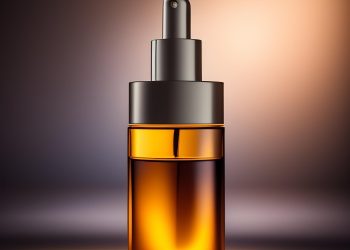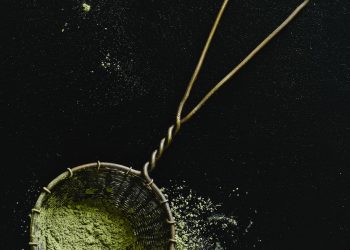Bacterial vaginosis (BV) is a common vaginal infection. It happens due to an overgrowth of bad bacteria in a woman’s vagina [1].
Bacterial vaginosis causes a fishy odor and excessive discharge in the vagina.
Fortunately, you may get rid of bacterial vaginosis with the help of some home remedies.
Medical research supports the efficacy and safety of these natural herbs and supplements to eliminate bacterial vaginosis and its symptoms.
This article reviews some of the most effective home remedies for bacterial vaginosis, plus the causes and symptoms of recurrent vaginal infection.
How to Get Rid of Bacterial Vaginosis: 18 Natural Home Remedies
1. Yogurt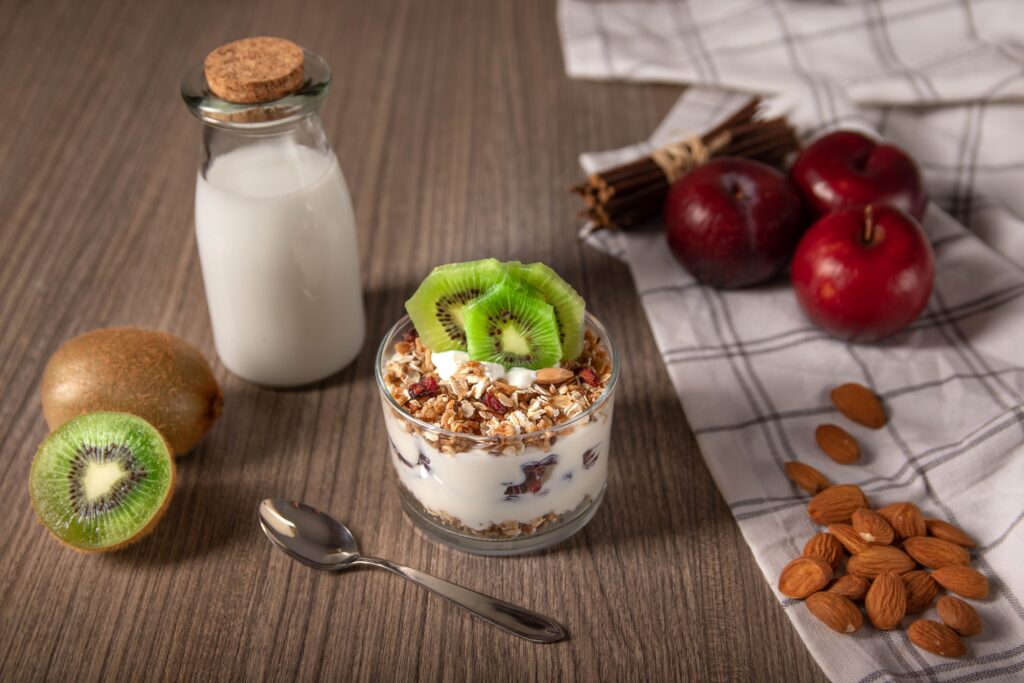
Yogurt is more than just a healthy probiotic. It’s also an efficient way to restore the balance of bacteria in the vagina [2].
120 patients consumed a capsule containing 8 billion units of Lactobacillus acidophilus. The other group took probiotics for 14 days [3].
Those who received the probiotic treatment reported fewer episodes of vaginal infection [4].
This treatment resulted in less bad odor and vaginal discharge [5].
The patients did not experience any side effects during treatment [5].
Researchers conclude that probiotics can reduce bacterial vaginosis safely and effectively [5].
Many other studies confirm that yogurt is also useful in combating other vaginal infections. It can even prevent complications such as pre-term birth [6, 7, 8, 9].
How to use yogurt for bacterial vaginosis:
- Spread a tablespoon of yogurt on a cotton pad.
- Apply to the vagina.
- Let it sit for 30 minutes before rinsing with water.
- Repeat three times a day until symptoms disappear.
- Eat one cup of yogurt a day to speed up treatment.
RELATED: 17 Practical Home Remedies for Vaginal Dryness & How to Use Them
2. Tea Tree Oil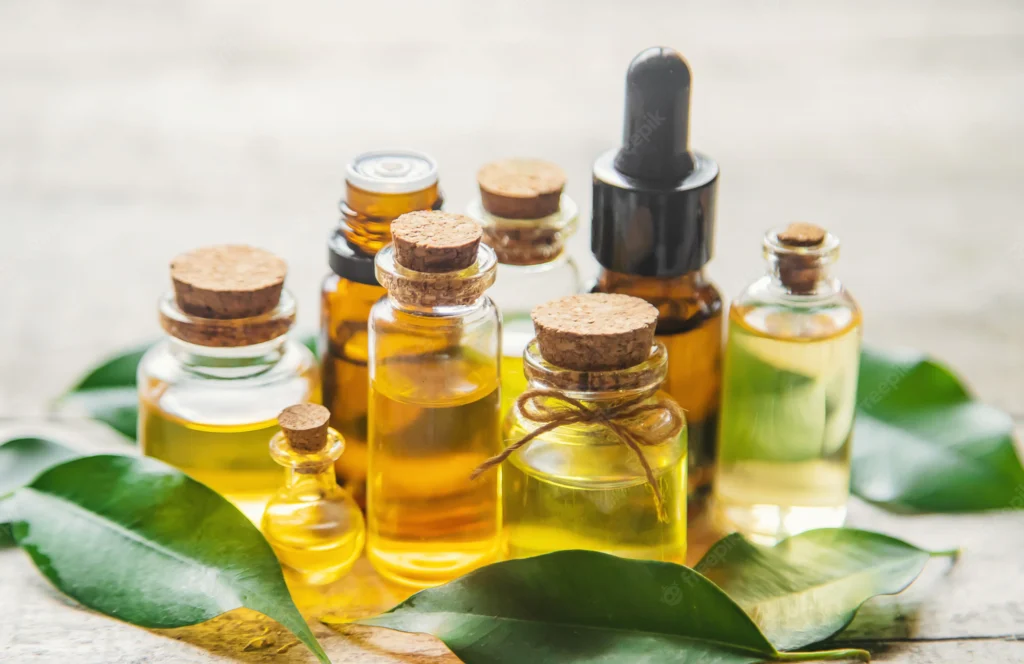
Tea tree oil is famous in many cosmetic and pharmaceutical products [10]. It has a broad spectrum of antimicrobial properties.
A woman suffering from symptoms of bacterial vaginosis used tea tree oil to treat herself [10].
The self-treatment was successful. The woman was free of symptoms after the treatment [10].
Later on, Australian researchers made a scientific investigation of tea tree oil. First, they investigated the effects of tea tree oil on vaginal infection [10].
The researchers collected three isolates of the bacterium Gardnerella vaginalis. Then, they exposed these to the minimum concentration of tea tree oil [10].
The tests were carried out using agar and broth dilution methods [10].
Findings reveal that tea tree oil can inhibit the activities of Gardnerella vaginalis. However, it doesn’t affect good bacteria [10].
How you may use tea tree oil to get rid of bacterial vaginosis:
- Mix 5 drops of tea tree oil with a bowl of warm water.
- Rinse the vagina with the solution.
- Repeat once a day for up to four weeks.
RELATED: 12 Incredible Health Benefits of Tea Tree Oil (Backed by Evidence)
3. Garlic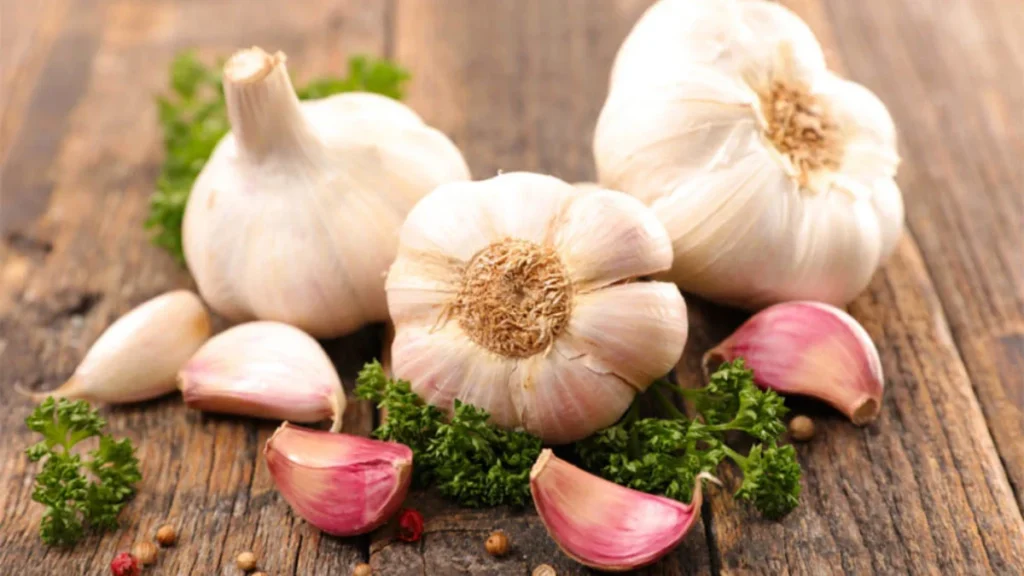
Many people know about garlic’s strength as an antibacterial agent.
People have been using garlic for decades to combat various types of infections.
Allicin, the main active compound in garlic, is a strong antimicrobial agent. It can kill a wide range of bacteria and fungi [11].
It works even for bacterial strains that have grown resistant to antibiotic medications [12].
It chemically reacts with the thiol groups of different enzymes. These enzymes affect the metabolism of the microbes [12].
For bacterial vaginosis, garlic is one of the effective alternative therapies [13, 14].
However, we need further studies to establish the safety of this herbal remedy for vaginal infections.
Garlic home remedy for bacterial vaginosis:
- Rub crushed garlic cloves gently on the vagina.
- Wait for 20 minutes before washing off with warm water.
- Do this remedy once a day for up to one month.
4. Coconut Oil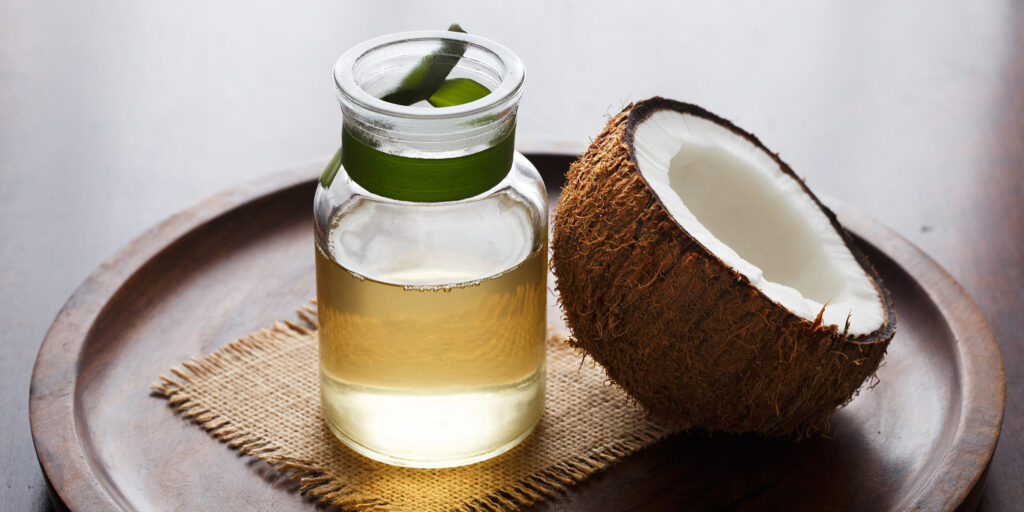
Coconut oil is a popular natural ingredient for skin and hair care.
According to numerous research, the medium chain fatty acids in coconut oil have bactericidal effects. The oil’s therapeutic qualities effectively inhibit inflammation, glycemia, and urogenital bacteria. [30] So, coconut oil may cure BV naturally in humans.
How to use coconut oil to get rid of BV:
- First, soak a tampon in coconut oil.
- Then, insert it into your vagina for two-three hours.
- Repeat the treatment daily until the BV subsides.
- Additionally, use coconut oil as cooking oil to boost immunity against bacteria.
5. Apple Cider Vinegar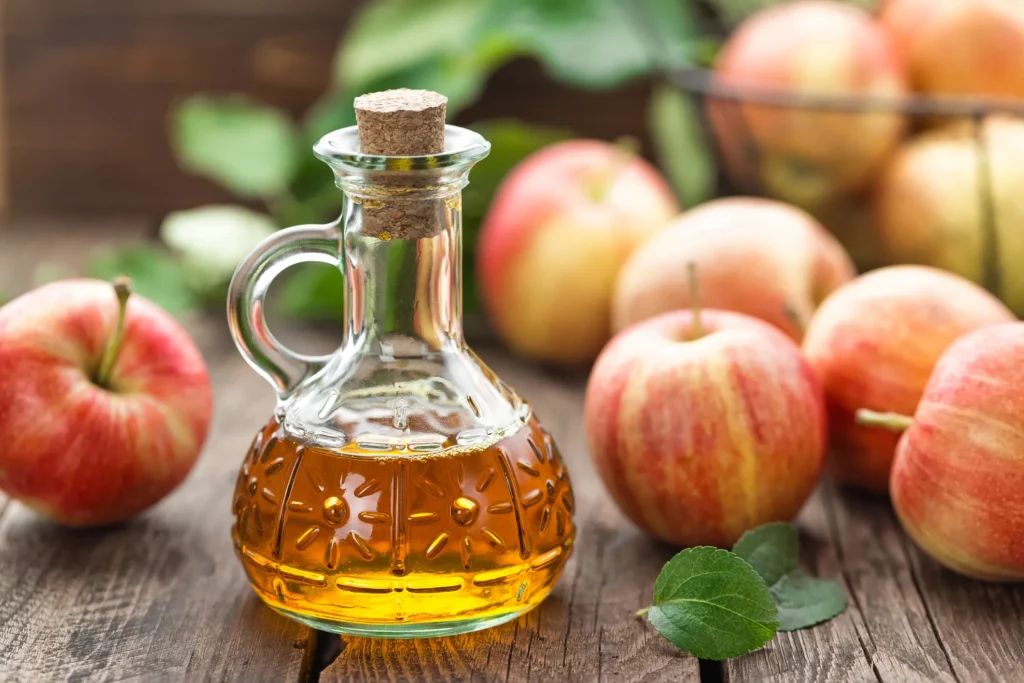
It doesn’t sound like a good idea to wash your vagina with vinegar.
However, it works well in combating vaginal infections caused by pathogenic bacteria.
Apple cider vinegar possesses potent antiseptic and antibacterial properties. These compounds can fight off the bacteria that cause malodor [24].
It prevents microbes from adhering to the vaginal area and causing harm [24].
Moreover, it also helps restore the acidity of the area to maintain proper vaginal flora.
How to drink ACV to relieve bacterial vaginosis:
- Add 1-2 tablespoons of apple cider vinegar to a glass of water.
- Mix well.
- Drink this concoction once or every other day for one to two weeks.
RELATED: How to Use Apple Cider Vinegar for Eczema Relief
6. Goldenseal
Goldenseal can be an effective herbal remedy for bacterial vaginosis.
The dried goldenseal herb is used for various medicines. [31]
Goldenseal contains a potent natural compound called berberine. Many research evidence confirms its antimicrobial and antifungal effects.
Goldenseal is good for skin disorders and symptoms such as itching, herpes blisters, eczema, irritations, swelling, wounds, acne, ringworm, and rashes.
Experts also claim that goldenseal is good for women suffering from vaginal swelling, pain, and period cramps.
A 2016 study reviewed the efficacy of alternative treatments for recurrent bacterial vaginosis.
Evidence suggests that goldenseal herbal supplements in capsule form taken for one month can significantly cure bacterial vaginosis. [32]
How to use goldenseal to get rid of bacterial vaginosis:
- Consume one goldenseal capsule every night before bed for a month.
- Alternatively, you may use goldenseal tea as a vaginal wash to treat bacterial vaginosis.
7. Boric Acid
There has been no research or clinical trial investigating the efficacy of boric acid in treating bacterial vaginosis. However, for over a hundred years, women have been using boric acid as an inexpensive and effective home remedy for vagina infections such as bacterial vaginosis. [33]
Besides, the Centers for Disease Control and Prevention (CDC) claim boric acid to be an effective remedy for recurrent and persistent bacterial vaginosis.
However, the experts are unsure of the safety of intravaginal boric acid treatment for vaginal infections.
Though many patients claim that boric acid suppositories successfully end their bacterial vaginosis, we need a clinical trial to confirm its efficacy.
8. Neem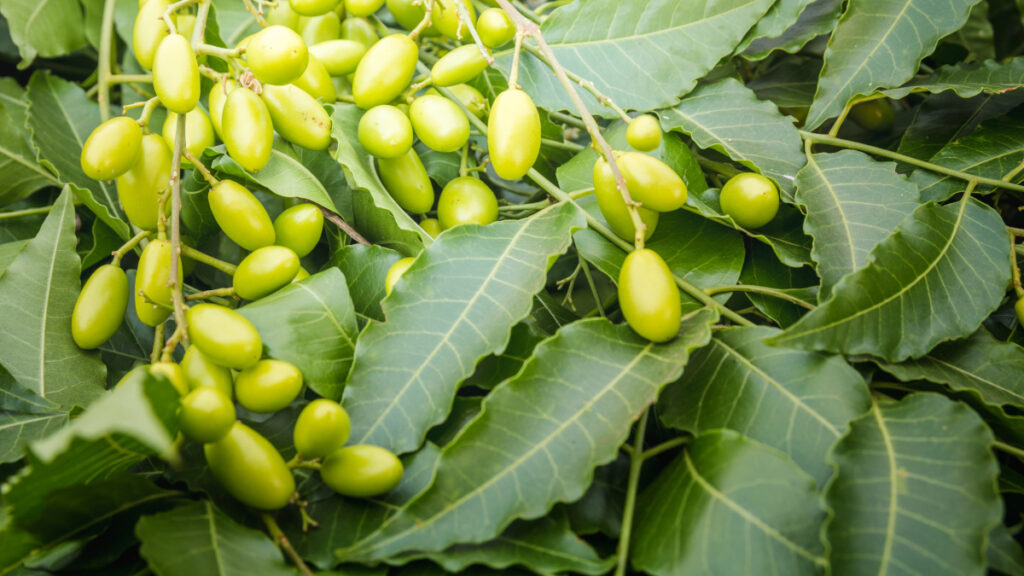
Neem is a popular remedy in Ayurveda and Homeopathic medicine.
It has generated interest worldwide with its broad range of therapeutic benefits [15].
It has over 140 active compounds.
Neem can fight many types of ailments, including malaria, skin disorders, inflammatory diseases, dental problems, fever, cancer, etc. [15]
Most of its parts—leaves, seeds, flowers, fruits, bark, and roots—have medicinal value [15].
Unsurprisingly, you can also use it as a remedy for vaginal infections.
Clinical trials show that it’s highly effective in resolving abnormal vaginal discharge. [16]
It was one of the key ingredients in a polyherbal cream. The cream is highly active against bacteria commonly known to infect the vagina [16].
Here’s how you may use neem oil for bacterial vaginosis:
- First, combine 5 drops of neem oil with 1 tablespoon almond oil.
- Then, apply the oil mixture to the vagina.
- Follow this remedy once a day for up to three weeks.
RELATED: 12 Most Effective Home Remedies for Vaginal Itching
9. Japanese Mugwort
Japanese Mugwort may not be as popular as garlic or tea tree oil in fighting infection. But it also works effectively.
Japanese Mugwort has antibacterial activities against Gardnerella vaginalis. [17]
Its active compounds, alpha-terpineol, and eucalyptol may inhibit the bacteria [17].
Alpha-terpineol can wipe out most bacterial strains. [17].
Its effects were similar to that of clotrimazole.
Clotrimazole is an antibacterial drug prescribed for this condition [17].
These compounds may also alleviate the activities of pro-inflammatory cytokines and NF-KB [17].
Researchers conclude that Japanese Mugwort can reduce the bacteria in the vaginal cavity and tissues [17].
How to use Japanese Mugwort for bacterial vaginosis:
- Boil a pot of water.
- Add a handful of Japanese mugwort leaves.
- Use this solution to rinse the vagina.
- Repeat once a day for three weeks.
10. Lemongrass Oil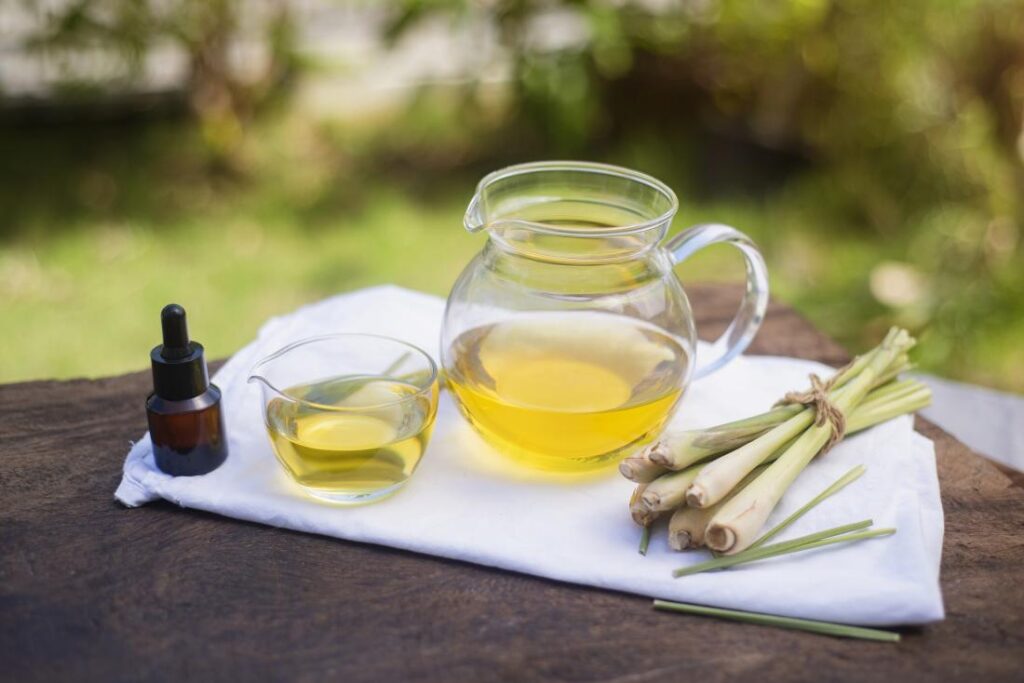
Lemongrass oil comes from a tropical perennial plant. It grows in sunny and humid environments [18].
The long list of its uses for health will astound you.
Traditional healers use lemongrass to treat fever, pain, and infectious diseases [18].
It can also aid digestion and reduce inflammation, head lice, and dandruff. It can even prevent certain forms of cancer [18].
Lemongrass is also beneficial for those suffering from bacterial vaginosis [19].
Lemongrass is one of the “most potent essential oils” to inhibit vaginal infections [19].
It needs the lowest inhibitory concentration to kill the bacteria[19].
How to use lemongrass oil to get rid of bacterial vaginosis:
- Add 5 drops of lemongrass oil to 1 tablespoon of jojoba oil.
- Mix well.
- Apply the oil mixture to the vagina.
- Leave it on for one hour before rinsing with warm water.
- Use this remedy daily for three weeks.
11. Lavender Oil
Lavender oil also has strong inhibitory effects against bacterial strains [19].
At 1 to 2.5 ml, lavender oil can successfully suppress the activities of infectious bacteria [19].
As a bonus, lavender is also an anxiolytic agent. It reduces stress and anxiety caused by having an unpleasant medical condition [20].
Like most of the essential oils listed here, it’s important to dilute lavender first before using it.
This is to ensure that your skin does not get irritated.
A simple way to use lavender oil to get rid of bacterial vaginosis:
- Mix 5 drops of lavender and 2 drops of tea tree oil with 1 tablespoon olive oil.
- Wash vagina with oil mixture.
- Repeat once a day until symptoms are gone.
RELATED: 11 Health Benefits of Lavender Oil That You Should Know
12. Clove Oil
Clove oil is a potent antibacterial agent. People have been using it has a long time to treat all sorts of bacterial infections in clove oil.
Eugenol in clove oil effectively reduces symptoms of vaginal infections [21].
In one study, women with bacterial vaginosis used clove oil once a day for a week [21].
Results show that it worked just as well as thyme in reducing unpleasant symptoms [21].
Its effects were comparable to those of vaginal metronidazole [21].
Apart from this, this oil also helps resolve the issue of bacterial imbalance in the vagina [21].
It’s no surprise that it’s one of the most widely used natural remedies for bacterial vaginosis.
How to use clove oil for bacterial vaginosis natural treatment:
- Dilute 6 drops of clove oil in a cup of warm water.
- Use the solution to rinse the vagina after bathing.
- Repeat until symptoms disappear.
13. Thyme Oil
Suffering from an annoying vaginal infection?
Thyme oil can come to your rescue.
Researchers claim that thyme oil is an effective treatment for bacterial vaginosis [22].
Thymol, in thyme oil, interferes with the growth and spread of Gardnerella vaginalis [22].
Thymol’s antibacterial properties prevent bacterial strains’ adhesion [23].
Even at minimum concentration, it can prevent infection.
Recommended Directions:
- Combine 6 drops of thyme oil in a cup of jojoba oil.
- Apply the solution to the vagina.
- Follow this remedy once a day for three weeks.
14. Baking Soda
Baking soda is not just an all-around household cleaner. It’s also an efficient way to maintain vaginal hygiene.
So here’s how it works:
Baking soda is a natural alkaline that helps neutralize the pH level in the vaginal area.
When there’s a proper pH balance in the vagina, the odor and infection will eventually disappear.
Plus, baking soda is also a natural deodorizer that can freshen up the smell down there.
Indian researchers recommend baking soda as an alternative treatment for this problem [25].
How you may have a baking soda bath to reduce bacterial vaginosis :
- Add 1 cup of baking soda to your bath water.
- Soak in the bathtub for 20 minutes.
- Then, dry your body thoroughly with a clean, soft towel before putting on your clothes.
- Do this every day until the infection is cleared.
RELATED: How to Use Baking Soda Bath for Diaper Rash Treatment
15. Hydrogen Peroxide
Hydrogen peroxide effectively disinfects minor cuts, bruises, burns, cold sores, and various skin disorders.
According to research, hydrogen peroxide is an exceptional home remedy for bacterial vaginosis.
Hydrogen peroxide is a combination of hydrogen and oxygen. The hydrogen component of the chemical hydrates your vagina. The harmful microbes cannot stand the oxygen components. [26]
The chemical can fight off the bad microbes responsible for vaginal odor, discharge, and infections.
Hydrogen peroxide is more affordable than other medications for relieving bacterial vaginosis.
How to use hydrogen peroxide douche for bacterial vaginosis:
- Dilute 1 ounce or 6 teaspoons of hydrogen peroxide with 100 ml. distilled water.
- Now rinse your vagina with the solution.
- Repeat the process twice or thrice daily for 3-4 days.
- Additionally, drink apple cider vinegar solution (mixing one tablespoon of ACV with 500 ml. water) thrice daily to restore good vaginal flora.
16. Fenugreek
Fenugreek has immense therapeutic values.
It’s widely known to boost the immune system. In addition, it may maintain a healthy heart, treat constipation and diabetes, and lower cholesterol.
Fenugreek contains tannins, carbohydrates, phenols, flavonoids, alkaloids, and terpenes.
These components provide numerous health benefits.
Fenugreek helps to create a balance in the pH of the vagina. Thus you can use it as a natural home remedy to treat bacterial vaginosis. [27]
Methods of using fenugreek to get rid of bacterial vaginosis:
- Soak a teaspoon of fenugreek in a cup of water overnight. Or you could add a teaspoon of fenugreek seed and simmer in a cup of boiling water for five minutes
- Drink this fenugreek water every day in the morning before having your breakfast
- You should continue drinking this water every day for the best results
17. Aloe Vera
Aloe Vera is another common home remedy that cures many health problems.
Anthraquinones in aloe vera have antibacterial properties.
As a result, Aloe Vera can be used on the vagina to kill the growth of bad bacteria. Aloe vera doesn’t have any side effects. [28]
How to use aloe vera gel to treat bacterial vaginosis:
- Wash 2-3 leaves of Aloe Vera and cut them along the length to obtain the gel
- Apply the gel to the affected area at any time of the day or night
- Repeat the process for about one to two weeks for the best results
RELATED: Aloe Vera for Gastritis, Ulcer, and Stomach Infections
18. Practice Hygiene
You should bring certain lifestyle changes to get rid of bacterial vaginosis fast.
Recommended Directions:
- Practice good hygiene of your private parts daily. Your rectum and vagina are situated relatively close to each other. Therefore, there’s a high chance of bacterial contamination from the stool. You should wipe and clean the area from front to back. That means from the vagina towards the anal region every time you pass a stool.
- During menstruation, try to change the pads and tampons at regular intervals. Also, wash and clean your sex toys with hot water and soap.
- Using condoms during sex is another important preventive step for bacterial vaginosis.
- Last, of all, replace all your synthetic underwear with cotton ones. Tight pants and linen underwear makes the vagina a breeding place for bacteria. Instead, allow the vagina to get some air and breathe.

Causes of Bacterial Vaginosis
Lactobacillus is a type of bacteria that prevents the growth of bad bacteria. It creates a slightly acidic environment in the vagina [1].
When the lactobacillus level drops, it causes the growth of bad bacteria. The situation may lead to Bacterial vaginosis(BV).
Moreover, BV may happen because of bacterial strains such as Gardnerella vaginalis.
Any woman can get BV, but certain things increase the chances of BV, such as:
- Smoking
- Douching
- Scented soaps
- Vaginal deodorants
- Multiple sex partners
- Oral and anal sex
All these factors may increase the chances of upsetting the natural balance of bacteria in your vagina.
When to See a Doctor
You may not always detect signs of bacterial vaginosis. However, the bacterial condition may cause the following: [29]
- A fishy odor in the vagina that gets stronger after sex.
- I am a burning sensation while peeing.
- Stomach cramps or pain.
- Thin white, gray, or even sometimes green discharge.
Itching rarely occurs in bacterial vaginosis. But you should not confuse BV for yeast infection.
You should consult a doctor to diagnose the condition properly.
Causes of Recurring Bacterial Vaginosis
Recurring bacterial vaginosis also needs medical attention. The rates of BV recurrence are very high. It happens when the initial therapies or treatments fail to build a natural balance in the ecosystem of the vagina. Moreover, an unhealthy lifestyle, some underlying causes, and ineffective treatment may also lead to a recurrence of bacterial vaginosis.
Some diseases and conditions are associated with bacterial vaginosis.
- Chlamydia, gonorrhea, herpes, and other STDs from a person infected with them.
- Post-surgical infection
- A pelvic inflammatory disease
A doctor may prescribe antibiotic cream or gel to inhibit the bacteria. Some of the traditional medications for BV include Metronidazole, Clindamycin, Secnidazole, etc.
Some Q&A About Bacterial Vaginosis
Are there other types of vaginal odor apart from this fishy smell?
Yes. There is. The other type of “smells” can be:
- Metallic smell
- Musky smell
- Yeasty or Bread smell
- Rotten smell
What do I do if I have these other types of smell?
If you have these other types of smell, you can try using the home remedies for vaginal odor above. Or the other best thing will be to go to your doctor.
Do certain types of food contribute to vaginal odor?
Yes. They do. Strong, heavily spiced, and scented food can affect your vaginal odor.
Foods such as coffee, onions, garlic, and strong spices can change your vaginal odor.
What you should do is try removing strong-smelling foods from your diet. For example, removing meat and dairy and slowly adding them to your diet. This way, you can see which food is contributing to the odor. If the problem persists, then you should consult your doctor immediately.
What is the difference between bacterial vaginosis and vaginal thrush?
The difference is quite simple. Vaginal thrush is a yeast infection, while bacterial vaginosis is a bacterial infection.
Is bacterial vaginosis a worry for pregnant women?
Yes. It is. It may increase the chances of abortion a lot. If you are a pregnant woman with bacterial vaginosis, get treatment immediately.
Can bacterial vaginosis occur in men?
No, men with a penis don’t get bacterial vaginosis.
What are some of the antibiotics I can use to get rid of bacterial vaginosis?
Some medicines prescribed by doctors include Metronidazole, Clindamycin, and Tinidazole. However, you must consult a doctor before taking these antibiotics.
Is bacterial vaginosis contagious?
No, it is not a sexually transmitted infection. But it can develop if you have had sex or have sex with multiple partners.
What is the normal pH of the vagina before a woman develops bacterial vaginosis?
Lactobacillus controls bacterial growth and maintains a slightly acidic pH of 3.8–4.2.
What is the difference between a yeast infection and bacterial vaginosis?
A vaginal yeast infection is mainly caused by a fungus called candida. It causes thick and white discharge with a cottage cheese-type appearance. The condition comes along with itching.
Conclusion
Bacterial vaginosis may not be life-threatening. Still, it can impact your life negatively. For example, BV can hamper your sexual life and intimate relationships.
Vaginal infection increases the risk of other bacterial and inflammatory diseases as well.
The home remedies for bacterial vaginosis discussed here are not alternatives to medical treatment.
In case these don’t reduce the symptoms, consult a doctor fast.
READ MORE: 18 Ways to Get Rid of Vaginal Odor Naturally



